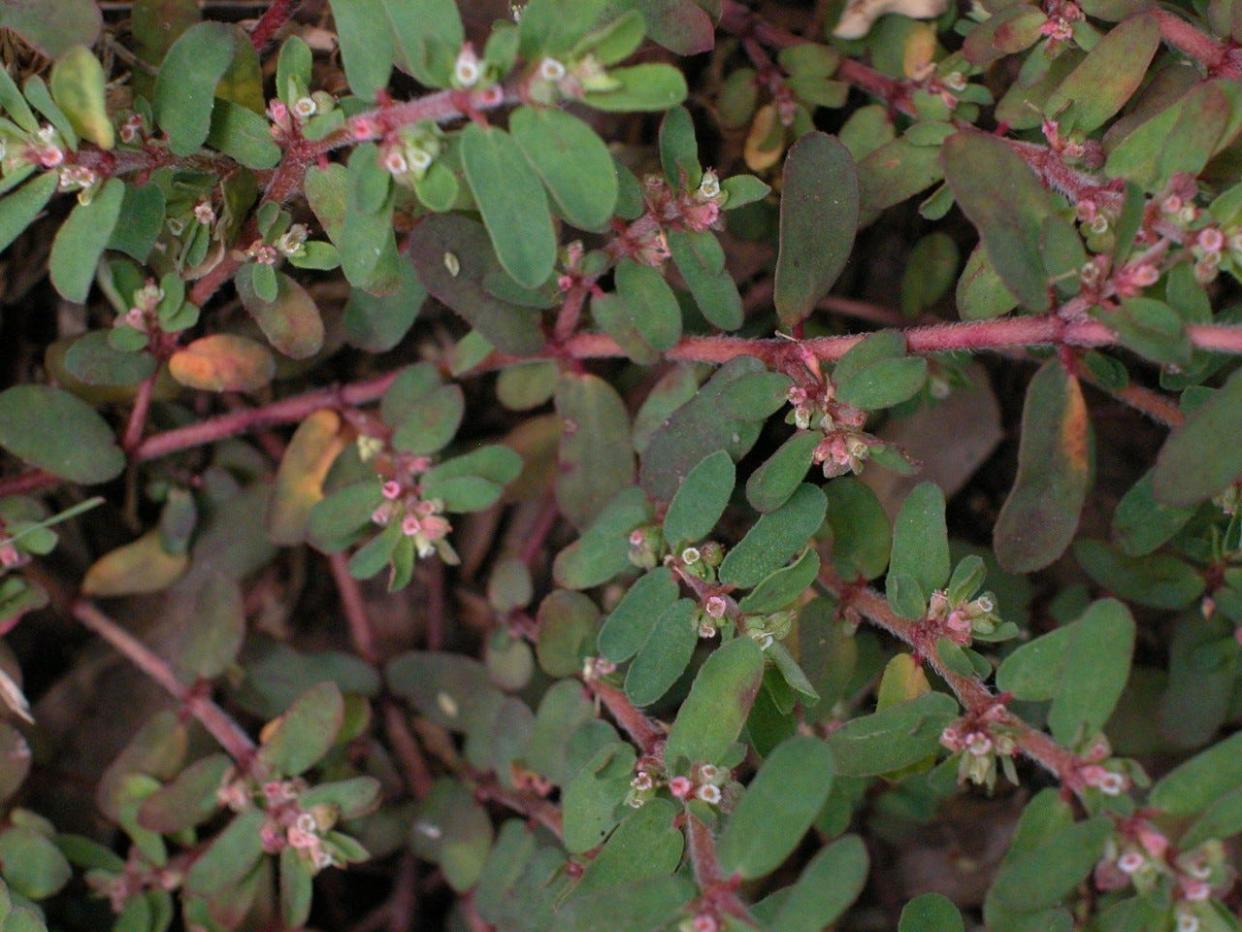This weed is happy almost anywhere, including sidewalk cracks | Mystery Plant

Humans are very good at coming up with mental images of how various objects ought to look. It is a basic way of bringing order to the chaotic world in which we live. For instance, when you think of the word "flower," you generally have a reasonably well-defined notion of what a typical flower looks like: sepals, petals, stamens and pistils, even if you don't know all the parts like a botanist would.
This week, we have a plant that offers us something that looks like a flower — or is it?
It blooms just about all year long. Technically, it produces both male (pollen-producing), and female (seed-producing) flowers, and these flowers are extremely reduced. This would be a good time to pull out your hand lens, as the blooms involved are quite tiny.
A green, cuplike structure will contain tiny male flowers, each consisting of a single stamen, these stamens lining the interior of the cup. In the interior of the cup is an odd, bulbous thing that hangs out on a tiny stalk. This is actually a highly reduced female flower, which bears no petals at all, and consists only of a pistil. Its swollen ovary will eventually produce a tiny capsule, with three seeds inside.
Bigleaf magnolia: A relatively small tree with huge leaves, flowers | Mystery Plant
Enjoy the flowers: What to do in the garden in May and June
The whole structure, including the cup, the lobes, the various male flowers and the female flower, is referred to as a peculiar little inflorescence called a cyathium. So, the small flower-like thing is not a flower. It’s a group of small flowers.
A cyathium is found only in certain members of the family Euphorbiaceae, which also gives us the well-known poinsettia. If you see cyathia (plural) on a plant, it must be akin to our Mystery Plant. (By the way, this coming Christmas, check out your poinsettia for yellow cyathia down below those bright red bracts.)
Our Mystery Plant, spotted sandmat (Chamaesyce maculata), is a very common herb, found in every one of the Lower 48 — Montana excepted. For whatever reason, this species is not recorded from Montana, and it’s a bit odd, as the Big Sky Country has had plenty of excellent botanists over the years. They just haven’t found this plant yet. Surely it is somewhere in Montana, just waiting to be discovered.
As I said, spotted sandmat is a really common herb, a weed, native to North America, but it’s hard to say where it “started out.” Now, many of its locations are based upon introductions from elsewhere. In fact, this species is widespread around the world, growing in neglected places, sidewalk cracks, untended sandy places — that sort of thing.
Spotted sandmat's stems will generally be flat on the ground, sometimes mounded. The stems are a bit hairy. The leaves are asymmetrical at the base: One side is broader than the other.
Perhaps the most interesting thing about it is that the stems and leaves contain a thin, whitish fluid that we term latex. If a leaf is pulled off them, or if the stem is broken, you generally see a drop of this latex oozing from the fresh wound.
This little plant is probably somewhere in your backyard. Montanans: Be on the lookout!

John Nelson is the retired curator of the A.C. Moore Herbarium at the University of South Carolina in Columbia S.C. As a public service, the Herbarium offers free plant identifications. For more information, visit www.herbarium.org or email johnbnelson@sc.rr.com.
This article originally appeared on Tallahassee Democrat: Mystery plant: Spotted sandmat can be found almost everywhere

